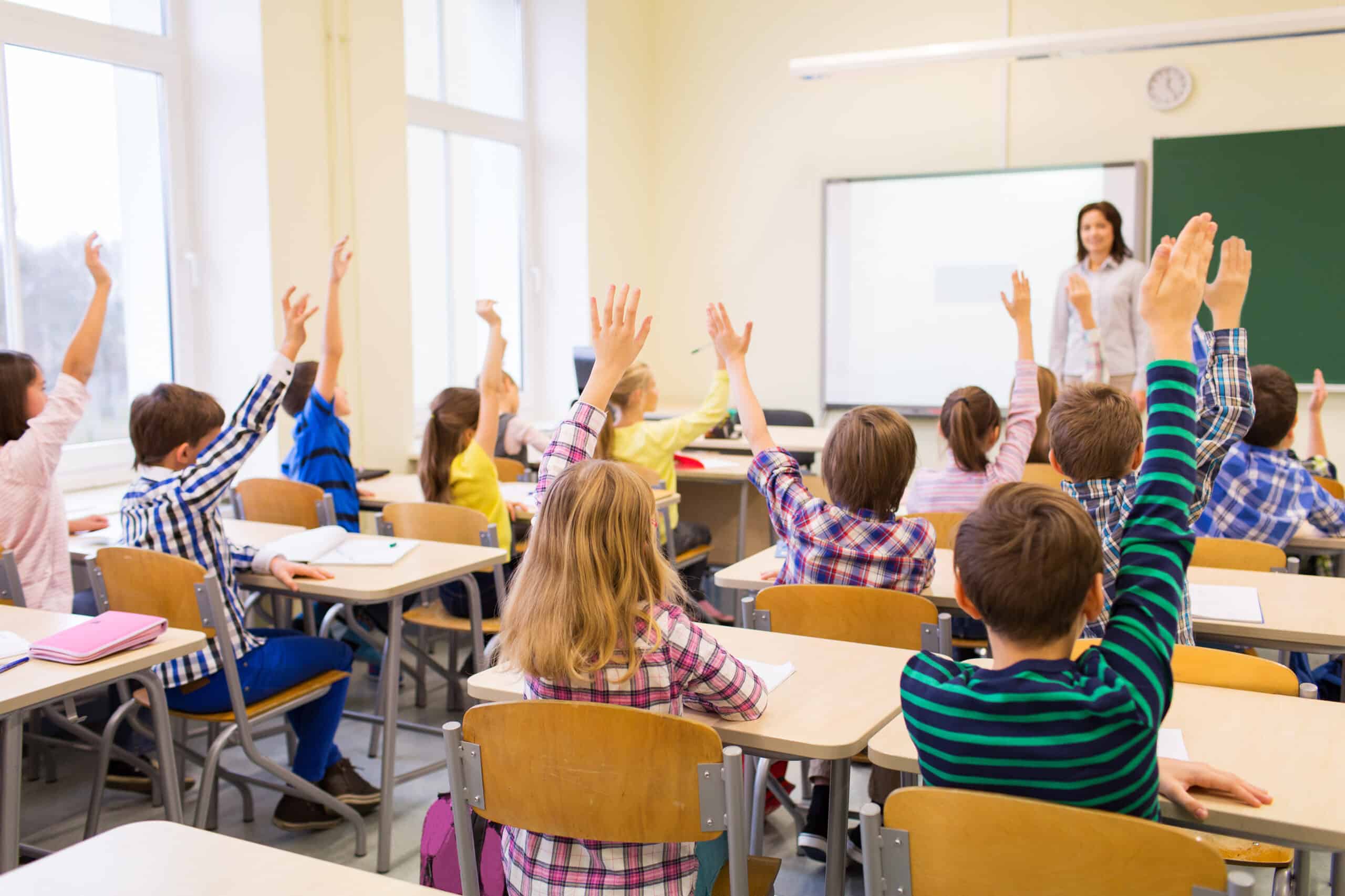Montessori vs. public school: Are there differences between these two models of education?
Yes. Plenty.
Methods of education have been a subject of debate for thousands of years. Literally. Nowhere is this more evident than in the chasm that separates Eastern thought from Western thought.
Confucius (551-479 B.C.) and Socrates (470 -399 B.C.) are two of the earliest teachers on record. Confucius created the underpinnings of Eastern educational philosophy, while Socrates provided the framework for what would become Western educational thought.
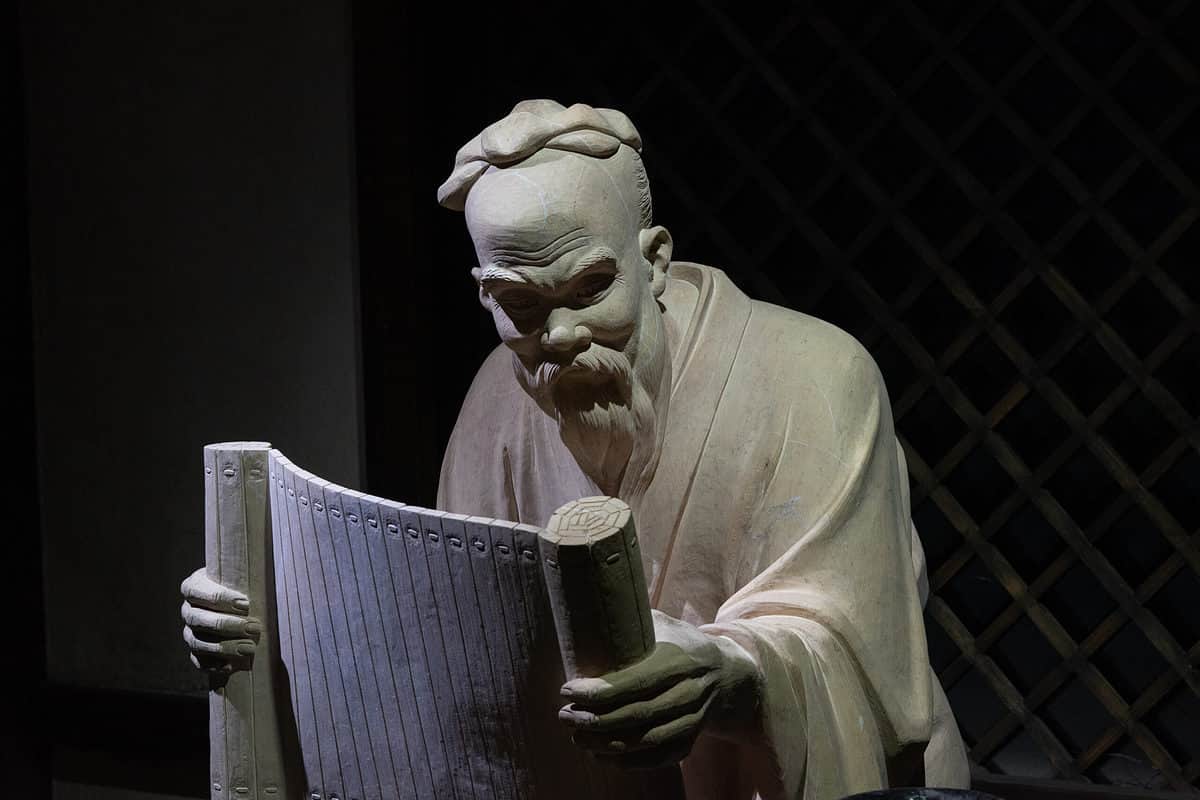
Confucius created the underpinnings of Eastern educational philosophy,
©Silvia73/Shutterstock.com
Though their goals were similar, their approaches couldn't have been more different. Both Confucius and Socrates saw education as the cultivation of wisdom and virtue. Confucius, however, felt that education was a moral imperative, while Socrates viewed education as a means of acquiring knowledge about the self, through understanding the world. These differences are still evident over 2000 years later.
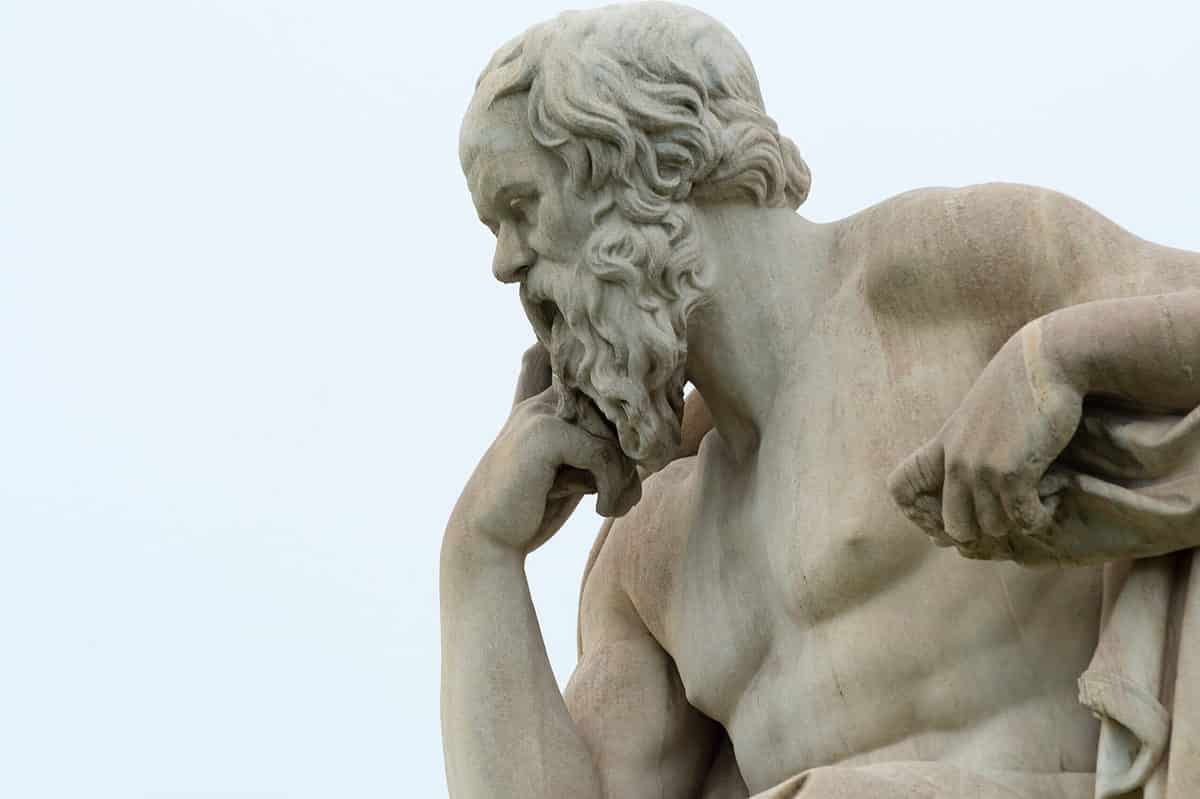
Socrates viewed education as a means of acquiring knowledge about the self, through understanding the world.
©vangelis aragiannis/Shutterstock.com
In the intervening millennia, newer methods of education that are not based on either of these ancient prototypes have entered the fray.
For example, Maria Montessori (1870-1952) conceived and developed a rather unorthodox model for educating young children at the dawn of the 20th century. Her eponymous method, dating from 1906, remains a bedrock of alternative education, boasting 15,000 schools in 110 countries across the globe.
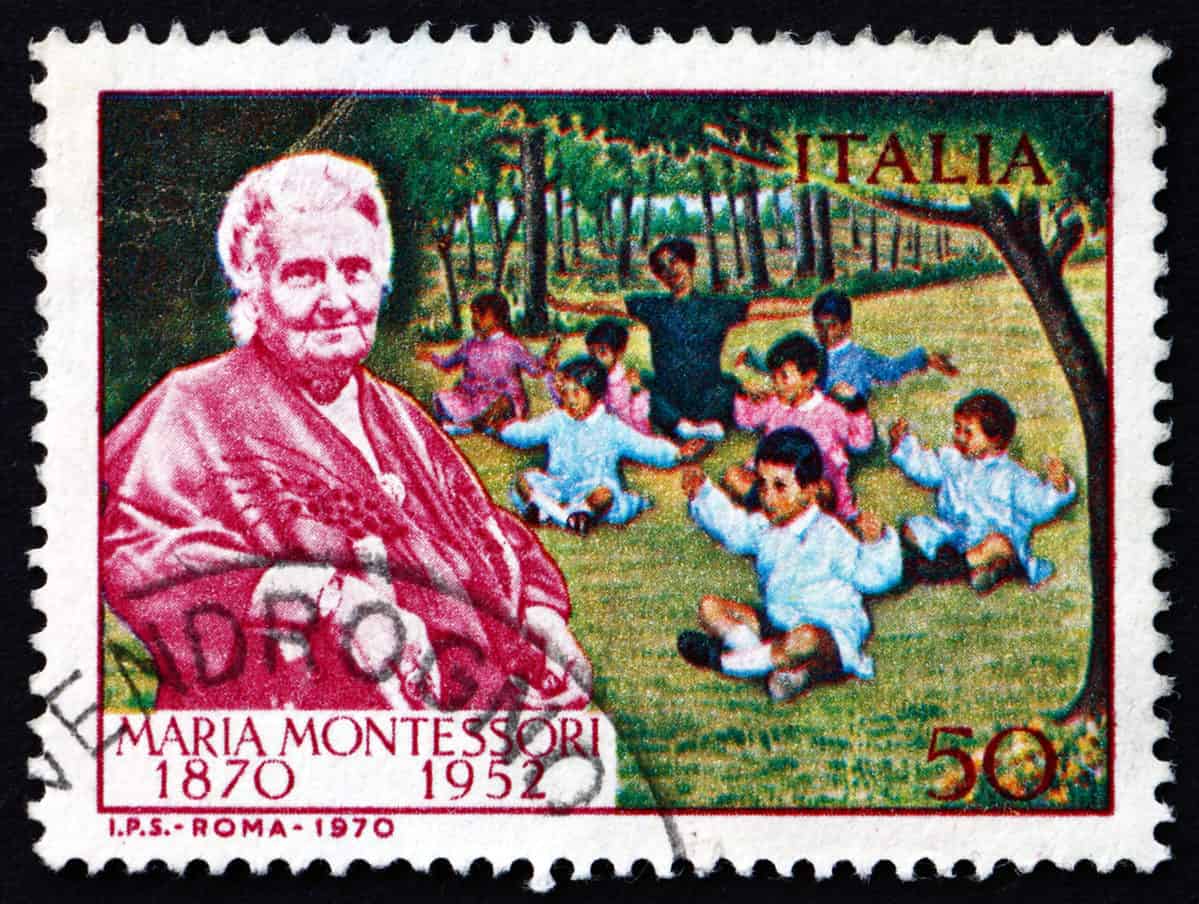
Maria Montessori conceived and developed a rather unorthodox model for educating young children at the dawn of the 20th century.
©Boris15/Shutterstock.com
So, what is the Montessori method, and how does it differ from public school? Keep reading to learn more!
Key Points of Differentiating Montessori vs. Public Schools
- Montessori is more unorthodox, while public schools use direct instruction.
- Students are their own teachers in Montessori and public school teachers are the authority figures.
- Educational methods have been a subject of debate for thousands of years.
- When conflicts arise, Montessori teachers act as mediators, whereas public school teachers use punishment as a form of discipline.
Montessori vs. Public Schools: Direct Instruction
There are a variety of educational methods used in publically funded schools across the U.S., including Montessori charter schools. However, for this comparison, references to public education are to the direct instruction method, which is the most common model used in the public sector.
Even if you did not attend a school that used direct instruction, you're undoubtedly familiar with the model: A teacher stands in front of a classroom, lecturing students who are seated at desks in neat rows. Students understand the expectation to sit still and be quiet, and when questions arise, from either side of the lectern, hands are raised.
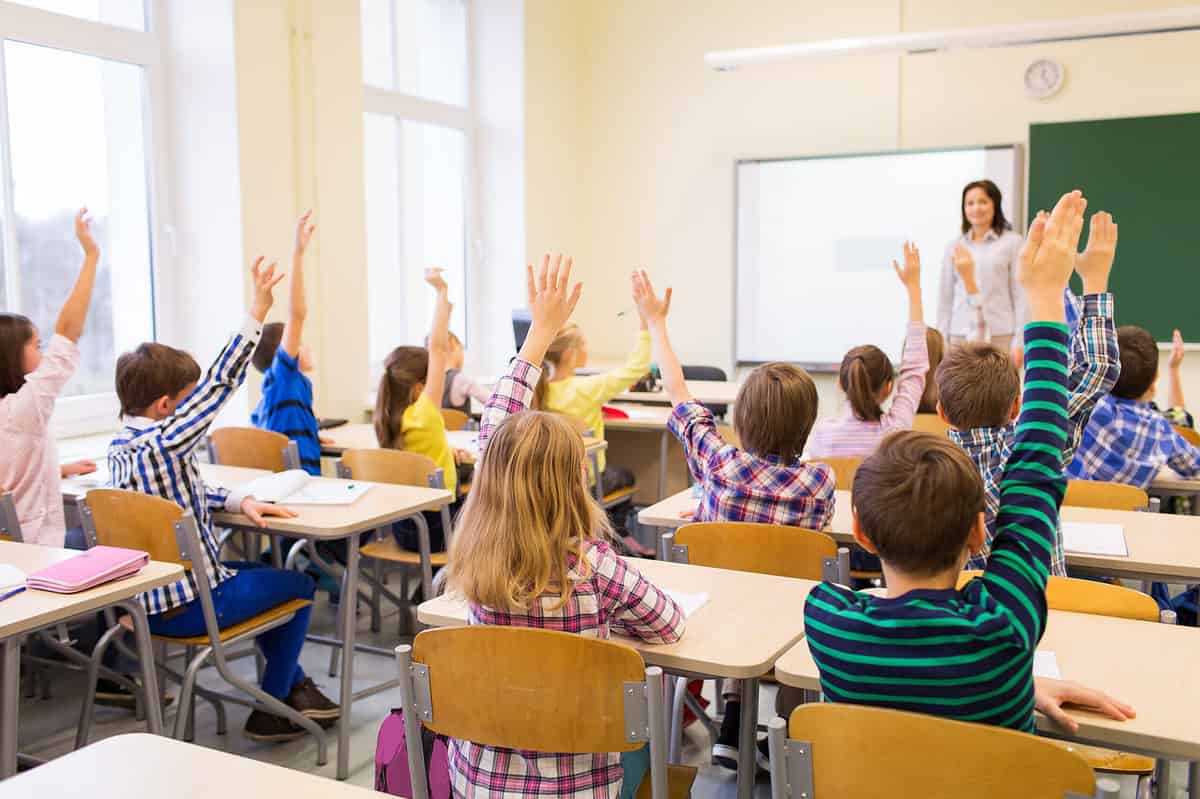
Even if you did not attend a school that used direct instruction, you're undoubtedly familiar with the model.
©Ground Picture/Shutterstock.com
There is also a sequence to each lesson:
- Lecture, in which the teacher presents lesson objectives and information.
- Guided practice, in which the teacher gives the class a task to aid understanding of concepts presented in the lecture.
- Individual practice, in which the teacher assigns students activities that will strengthen their burgeoning knowledge. This could be an in-class activity or homework assignment.
- Measurement of students' understanding of lesson objectives, typically in the form of a written test/exam.
- Feedback in which the student receives a number or letter grade.
Montessori vs. Public Schools: Teacher Role
One of the overarching differences between Montessori and public schools is the role of the teacher.
In public schools, teachers are the authority figures. They are the imparters of knowledge as well as the disciplinarians who mete out consequences for inappropriate behaviors, often in the form of punishment. In the Montessori classroom, however, children are their own teachers, with the adult presence in the room functioning as a gentle guide and facilitator.

The adult guide prepares the classroom for the children so that the tools of learning are organized and waiting for Montessori students.
©Nataliia Zhekova/Shutterstock.com
According to Maria Montessori, children are capable teachers, able to educate themselves. Children have absorbent minds that soak up knowledge from the world around them, and the Montessori classroom is designed to stimulate curiosity. The adult guide prepares the classroom for the children so that the tools of learning are organized and waiting for them.
Public school teachers, on the other hand, create lesson plans, prepare lectures, and assign classwork and homework. They give tests and quizzes, to measure abilities and knowledge. And, they are responsible for grading: d) all of the above.
Discipline
These two educational models use vastly different methods of classroom management.
Montessori teachers are mediators, facilitating conflicts that arise between classmates or one-on-one (teacher-to-student) when classroom rules or etiquette are breached. In extreme cases, children who have trouble functioning within the bounds of expected classroom decorum are typically asked to stay home to reflect on their conduct, returning to the classroom only when they have expressed their understanding of the situation and their ability to refrain from the same or similar behavior going forward.
Tasked with teaching lessons in the amount of time reserved for specific subjects, public school teachers do not have time for disruptions or shenanigans of any sort.
Therefore, many public school classrooms rely on token economies to establish desired behaviors. These external responses to/rewards for compliance work wonders in the short term. However, research suggests that these systems do little to instill lasting change.
Implementing these classroom behavior models requires time and patience, which are often in short supply in public school classrooms. Consequently, in extreme cases, discipline manifests as draconian punishment, in which the child is made to feel less than, at the hands of the overworked, under-appreciated teacher. The result is fear and mistrust; not a winning combination for teacher/student relationships, but sadly much too common.
Montessori vs. Public Schools: Curriculum
Nowhere else is the divergence between Montessori and public schools more evident than in the curriculum — or lack thereof.
Public schools rely on mass-produced curricula, in which deviating from the script in any fashion is discouraged. Yes, you read that correctly. Much of the curriculum taught in public schools across the country comes with teacher scripts.
Reasons for the scripts vary, from the synchronization of presentation to controlling the narrative, according to who is asked. Scripts leave no room for individual creativity or input. Much of lesson time is spent teaching to the test, as federal funding and merit raises hinge on the metrics of success assigned to individual schools/classrooms via annual tests of students' comprehension.
Scripted education is not the panacea it was designed to be. It leaves little room for imagination or creativity – for both teachers and students. Montessori, on the other hand, is all about creativity and imagination.
The only scripts you're likely to find in a Montessori classroom are ones these students have written themselves. There are no standards of learning in Montessori schools. Children are self-directed, learning experientially through exploration and play. Multi-age classrooms give rise to parallel learning opportunities, in which younger children observe and learn from older ones.
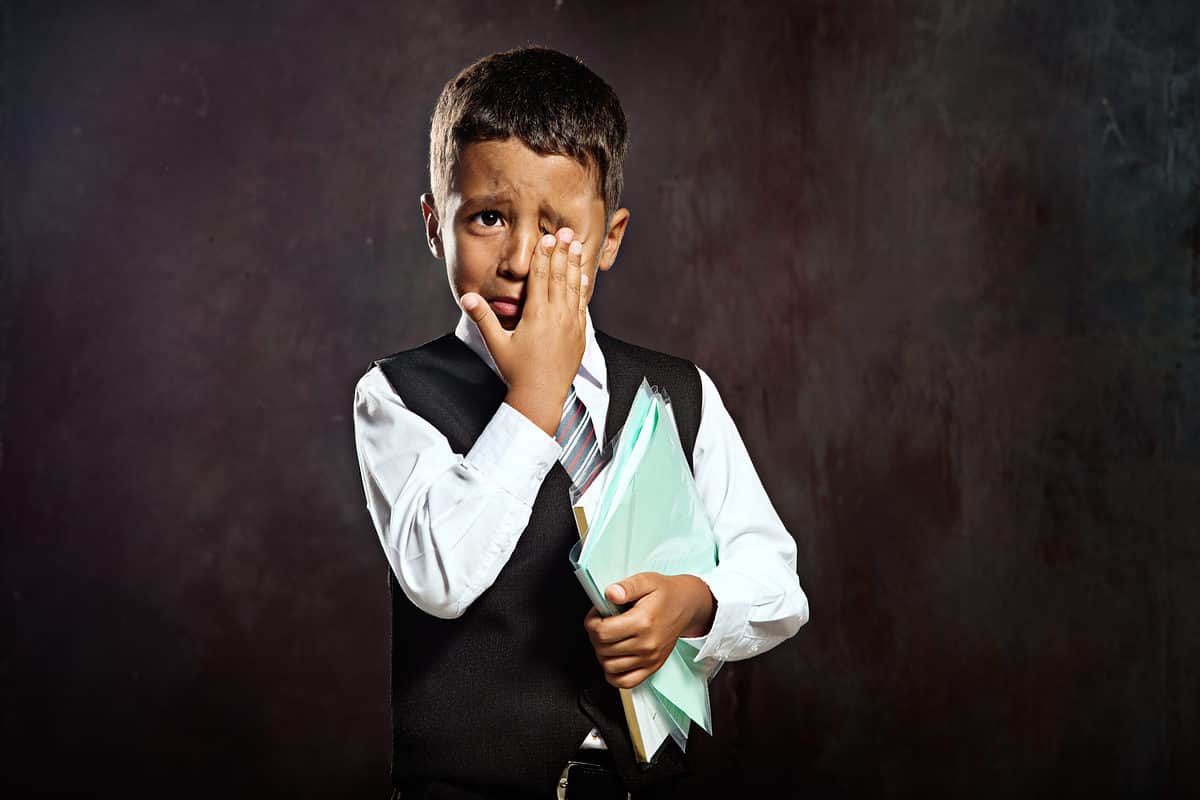
Montessori understood that children who perform poorly on tests could suffer from anxiety and low self-esteem.
©Karpova/Shutterstock.com
Montessori schools do not rely on testing or grades to measure children's abilities. Dr. Montessori understood that children who perform poorly could suffer from anxiety, low self-esteem, and an internalized sense of failure. On the flip side, performing well on tests does not affect a child's abilities or efforts going forward. Students' abilities and knowledge are extrapolated through teacher observation and quantified in written narratives that discuss the child's perceived strengths and weaknesses, offering more insight than a number or letter grade.
Conformity
Another difference between Montessori and public schools is conformity.
Public schools are all about it. To be labeled a success in the public sector requires conformity, from students and teachers, alike. Those who don't conform are not warmly embraced and are often punished. From scripted narratives to school uniforms, conformity is the norm in public education.
A scripted curriculum is the height of conformity. Teachers aren't teaching, they're acting; responsible for little more than delivering their lines, and performing the rituals of assigning homework and giving tests. Teacher shortages are at all-time highs across the county, thanks in part to teachers who have made the difficult decision to leave their profession, unhappy with their inability to, well, teach.
School uniforms, once a symbol of wealth and prestige, are finding their way into public school districts as a means of eliminating clothing deemed inappropriate. Determining what renders clothing inappropriate is subjective and in the case of those who have not yet reached the age of majority, probably best left for a parent or parental figure to decide.
Montessori schools, unlike their public counterparts, are all about fostering individuality, independence, and non-conformity. There is no curriculum, no script, and definitely no dress code. Students are the captains of their own ships and embrace their authentic selves, whatever that may look like.

Montessori students are encouraged to captain their own ships.
©Africa Studio/Shutterstock.com
Montessori alumni describe themselves as independent, intuitive, motivated, and questioning. Pulitzer Prize-winning author, Gabriel Garcia Marquez, a former Montessori student, said that Montessori awakens curiosity in children and allows them to marvel at the beauty of life.
The list of Montessori alumni is nothing short of astounding and includes successful professionals from all walks of life: Julia Child (chef, author), Taylor Swift (singer/songwriter), and NBA basketball player Seth Curry are all former Montessori students. Not to mention Google co-founders Larry Page and Sergey Brin who credit Montessori for teaching them to think outside the box.
Montessori vs. Public Schools: Accessibility
A final difference between Montessori schools and public schools is accessibility.
Of the 3000 Montessori schools operating in the U.S., 80 percent of them are private. The average yearly tuition at a private Montessori school is $14,000, though these numbers are much higher ($29,000 a year for preschool 1/2 days at the Montessori preschool in Manhattan) in metropolitan areas. Price tags like this limit access to families with deep pockets.
Tasked with educating large numbers of students across an infinite spectrum of learning styles and abilities, publicly funded schools make do with what they're given.
Comparing Montessori schools to public schools is a lot like comparing apples to oranges. Both are fruits, and both are schools, but that's where the similarities begin and end. In the battle of Montessori vs. public school, it's no surprise, really, that the well-funded private initiative comes out smelling like a rose relative to the woefully underfunded, overcrowded public schools. The comparison of these two educational models should not be mistaken for an indictment of public education.
Public schools consistently try different approaches to learning, attempting to reach as many students as possible. However, curricula are expensive, and replacing them often is not feasible in many districts, whose budgets are often stretched beyond their limits. And then there's the bureaucratic red tape that must be navigated before a different curriculum gets the green light. So, while adopting a new curriculum seems straightforward, it is anything but.
Montessori schools, on the other hand, have maintained the methods Dr. Montessori proposed over 100 years ago, with few, if any, changes to her original vision.
Montessori Alumni
There are millions of famous alumni of public schooling, but what about famous Montessori alumni? There are a number of household names who received schooling in a Montessori institution. According to the American Montessori Society, the following celebrities attended a Montessori school:
- Steph Curry
- Jeff Bezos
- Larry Page
- Sergey Brin
- Anne Frank
- Taylor Swift
- Will Wright
- Chelsea Clinton
- Prince George
- Seth Curry
Larry Page and Sergey Brin are credited with creating Google, while Will Wright created the famous, and highly successful, Sims video game series.
Beyoncé, Bill Gates, Mark Zuckerberg, and Princes William and Harry are often listed as Montessori alumni. However, these claims are mostly unsubstantiated and can't be proven. These individuals have been so widely-circulated as Montessori alumni that it is generally agreed upon that they did attend these institutions. Through research, however, the American Montessori Society was unable to confirm that these people attended a Montessori school.
George Clooney and Jimmy Wales are also often erroneously listed as Montessori alumni. These claims have been disproven by the American Montessori Society. If you see any article online claiming that a certain celebrity is a Montessori alum, be sure to fact-check it with the American Montessori Society. The growing popularity of this educational model means that many people are falsely claiming to be alumni when they are not.
The image featured at the top of this post is ©Ground Picture/Shutterstock.com
